Abstract
The affinity of anti-DNP antibodies produced by mice of various ages has been studied at the cellular level by the plaque inhibition technique. The affinity of PFC produced shortly after a single injection of antigen was found to increase during the first 6 weeks of life. The responses of 1- and 2-week-old animals also showed apparently restricted heterogeneity. The difference in the affinity of anti-DNP--PFC between young and adult mice could not be attributed to different (serum) levels of antigen or to differences in the rate of maturation of affinity during the immune response. Cell transfer experiments suggested that the age-dependent increase was due to a change in the population of antibody-forming (B) cell precursors and not to a progressive improvement of T-cell function. This findings is interpreted as favouring somatic mutation theories of antibody diversity.
Full text
PDF
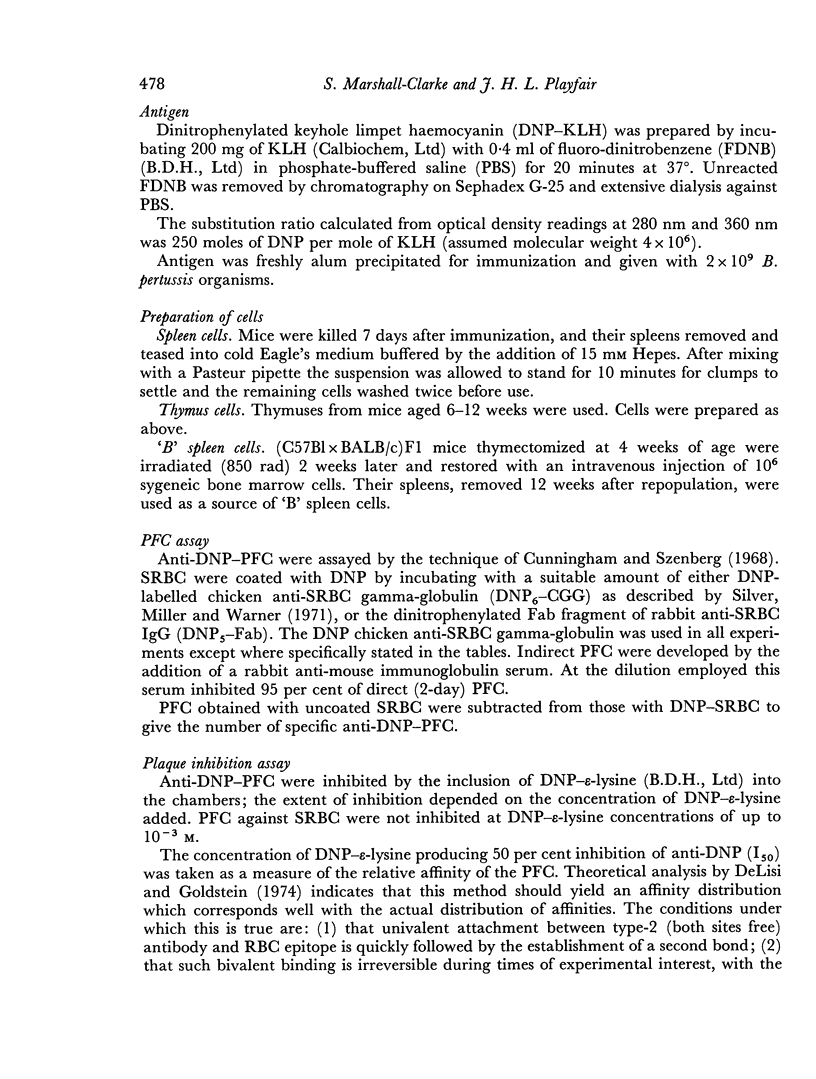
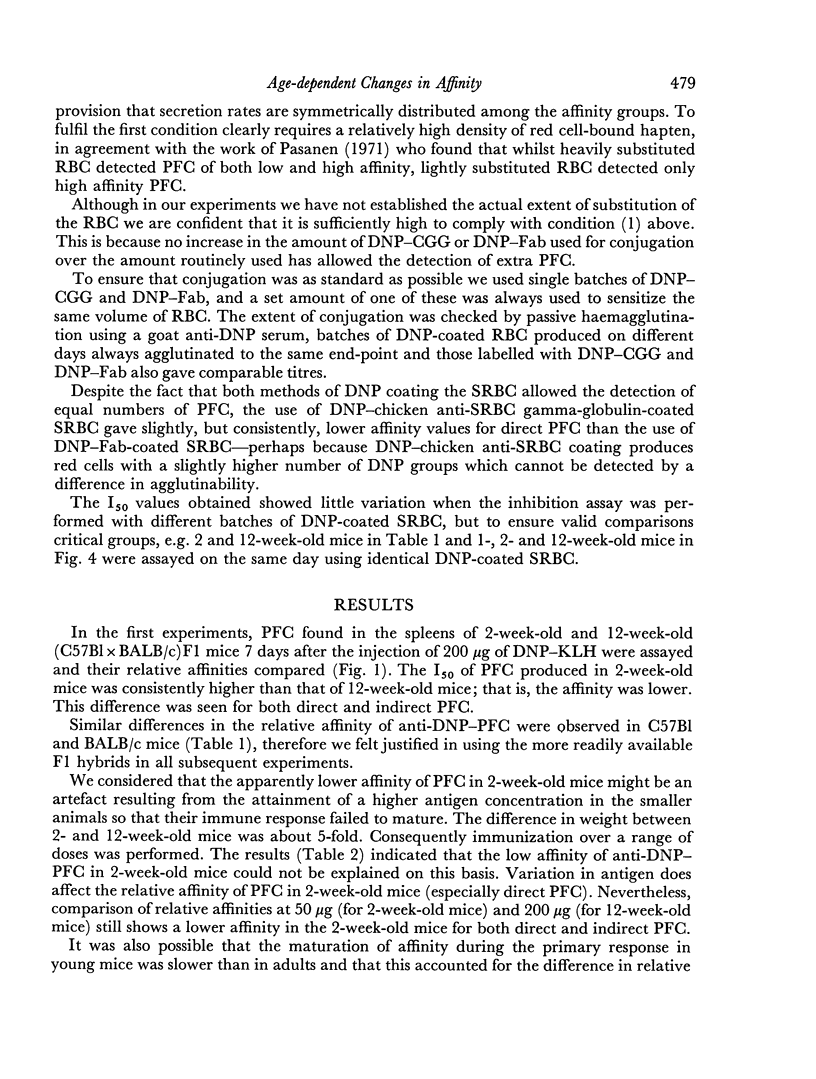
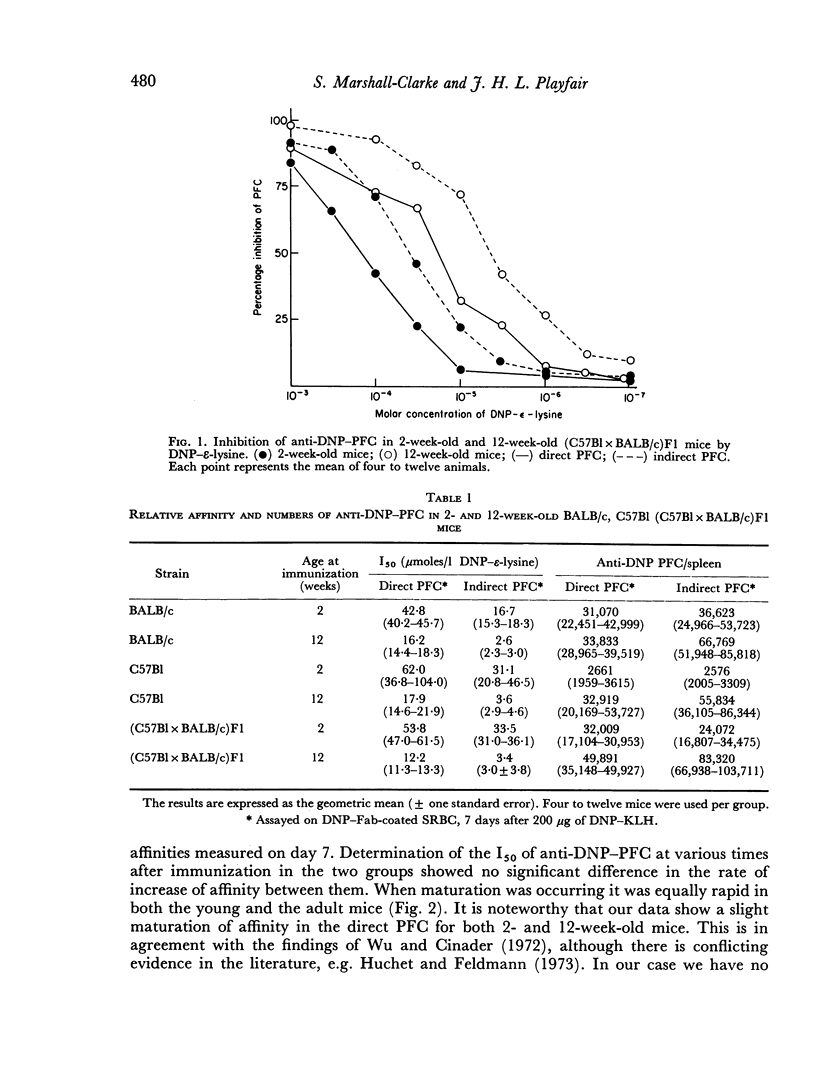
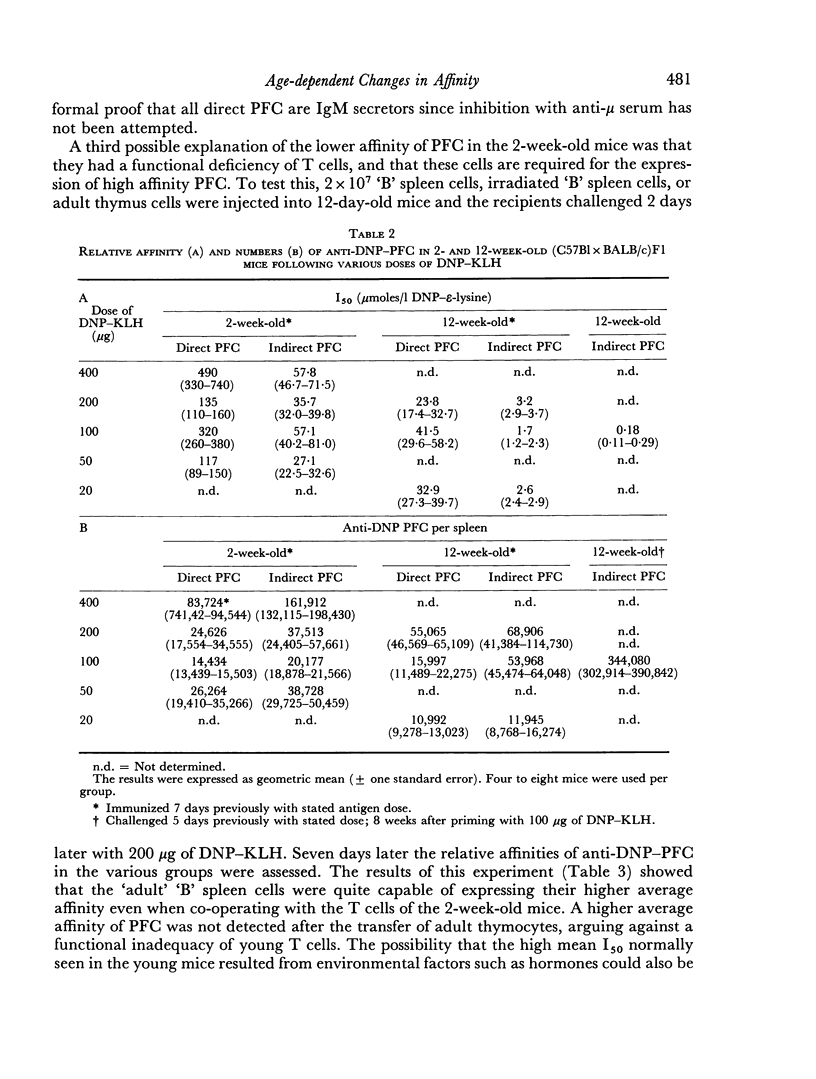
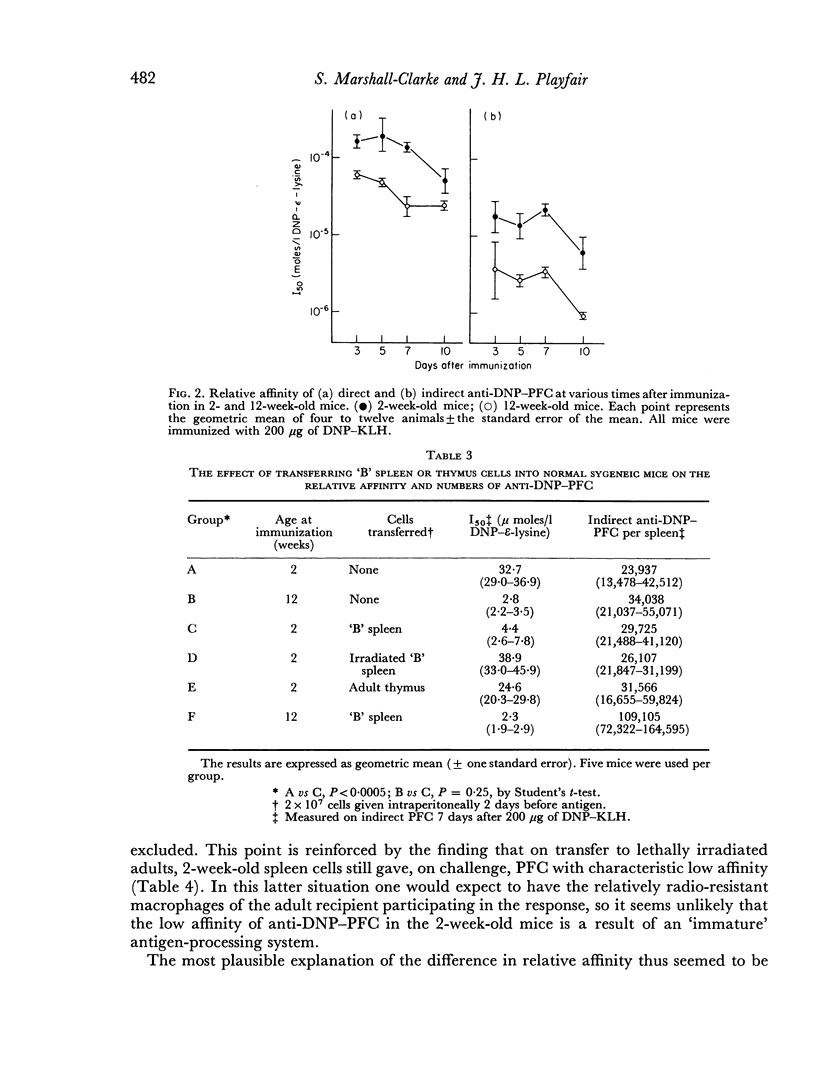
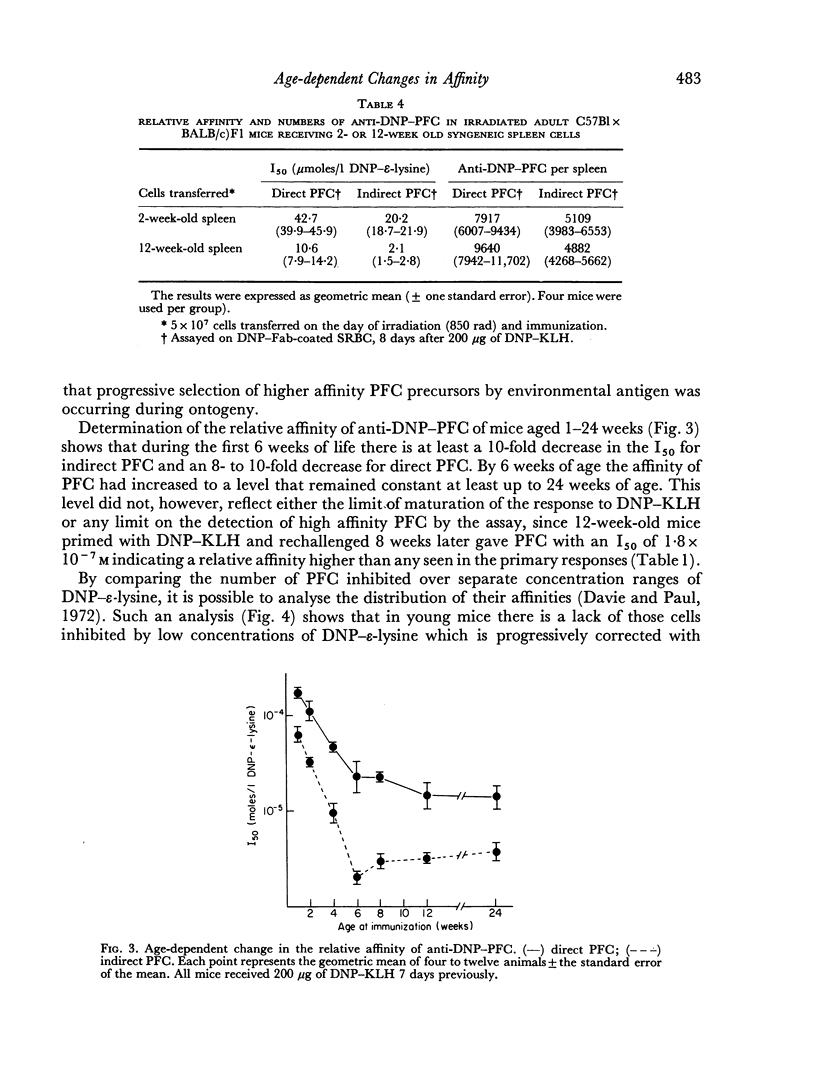
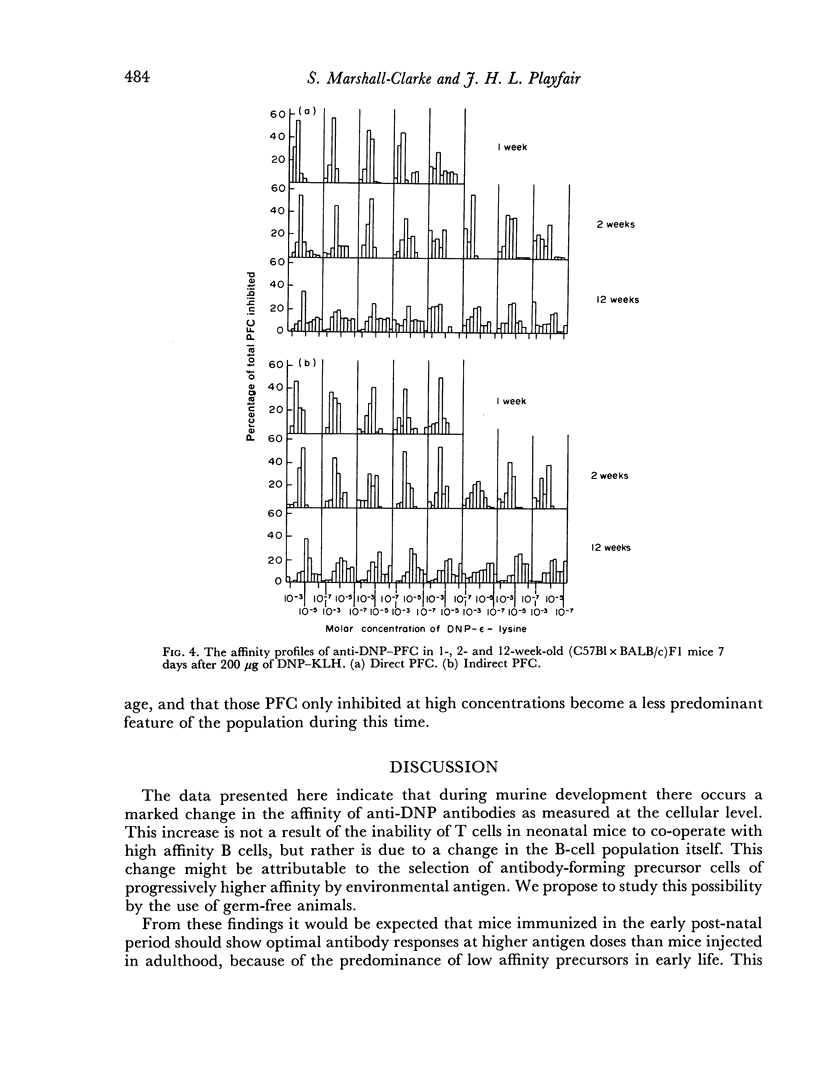
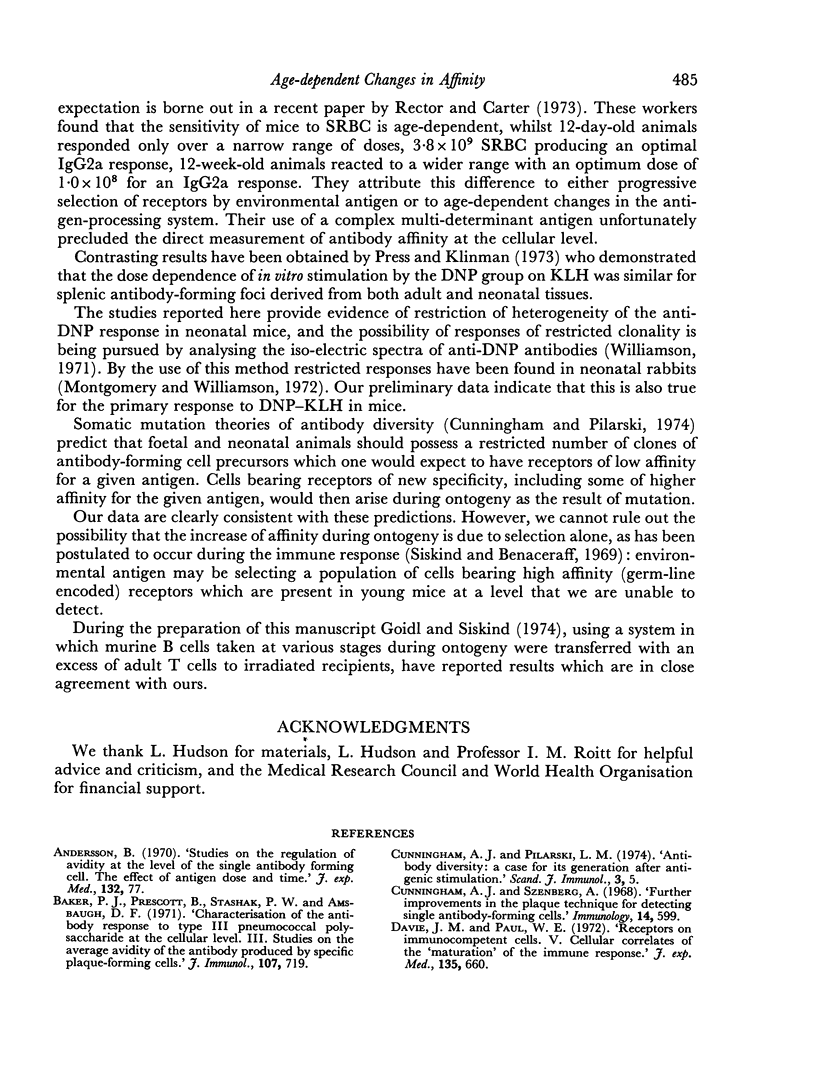
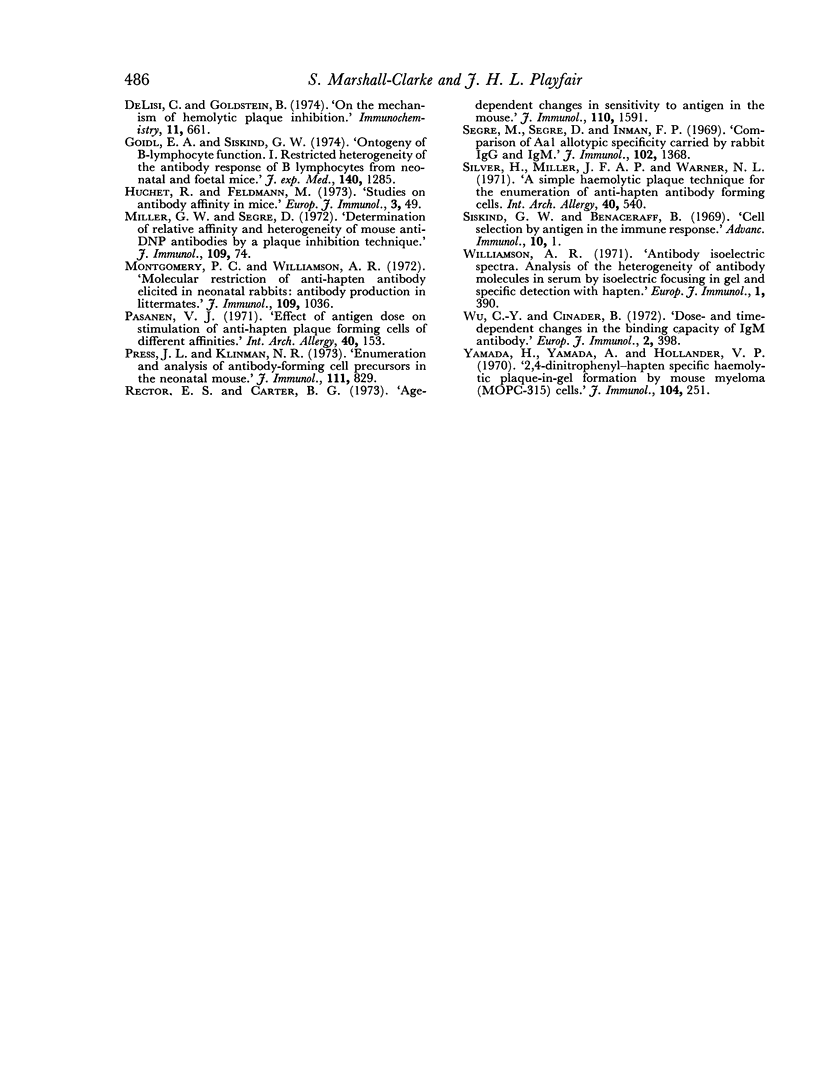
Selected References
These references are in PubMed. This may not be the complete list of references from this article.
- Andersson B. Studies on the regulation of avidity at the level of the single antibody-forming cell. The effect of antigen dose and time after immunization. J Exp Med. 1970 Jul 1;132(1):77–88. doi: 10.1084/jem.132.1.77. [DOI] [PMC free article] [PubMed] [Google Scholar]
- Cunningham A. J., Pilarski L. M. Antibody diversity: a case for its generation after antigenic stimulation. Scand J Immunol. 1974;3(1):5–10. doi: 10.1111/j.1365-3083.1974.tb01227.x. [DOI] [PubMed] [Google Scholar]
- Cunningham A. J., Szenberg A. Further improvements in the plaque technique for detecting single antibody-forming cells. Immunology. 1968 Apr;14(4):599–600. [PMC free article] [PubMed] [Google Scholar]
- Davie J. M., Paul W. E. Receptors on immunocompetent cells. V. Cellular correlates of the "maturation" of the immune response. J Exp Med. 1972 Mar 1;135(3):660–674. doi: 10.1084/jem.135.3.660. [DOI] [PMC free article] [PubMed] [Google Scholar]
- DeLisi C., Goldstein B. On the mechanism of hemolytic plaque inhibition. Immunochemistry. 1974 Oct;11(10):661–665. doi: 10.1016/0019-2791(74)90223-7. [DOI] [PubMed] [Google Scholar]
- Goidl E. A., Siskind G. W. Ontogeny of B-lymphocyte function. I. Restricted heterogeneity of the antibody response of B lymphocytes from neonatal and fetal mice. J Exp Med. 1974 Nov 1;140(5):1285–1302. doi: 10.1084/jem.140.5.1285. [DOI] [PMC free article] [PubMed] [Google Scholar]
- Huchet R., Feldmann M. Studies on antibody affinity in mice. Eur J Immunol. 1973 Jan;3(1):49–55. doi: 10.1002/eji.1830030111. [DOI] [PubMed] [Google Scholar]
- Miller G. W., Segre D. Determination of relative affinity and heterogeneity of mouse anti-DNP antibodies by a plaque-inhibition technique. J Immunol. 1972 Jul;109(1):74–83. [PubMed] [Google Scholar]
- Montgomery P. C., Williamson A. R. Molecular restriction of anti-hapten antibody elicited in neonatal rabbits: antibody production in littermates. J Immunol. 1972 Nov;109(5):1036–1045. [PubMed] [Google Scholar]
- Pasanen V. J. Effect of antigen dose on stimulation of anti-hapten plaque forming cells of different affinities. Int Arch Allergy Appl Immunol. 1971;40(1):153–160. doi: 10.1159/000230402. [DOI] [PubMed] [Google Scholar]
- Press J. L., Klinman N. R. Enumeration and analysis of antibody-forming cell precursors in the neonatal mouse. J Immunol. 1973 Sep;111(3):829–835. [PubMed] [Google Scholar]
- Rector E. S., Carter B. G. Age-dependent changes in sensitivity to antigen in the mouse. J Immunol. 1973 Jun;110(6):1591–1598. [PubMed] [Google Scholar]
- Segre M., Segre D., Inman F. P. Comparison of AA1 allotypic specificity carried by rabbit IgG and IgM. J Immunol. 1969 Jun;102(6):1368–1372. [PubMed] [Google Scholar]
- Silver H., Miller J. F., Warner N. L. A simple hemolytic plaque technique for the enumeration of anti-hapten antibody forming cells. Int Arch Allergy Appl Immunol. 1971;40(4-5):540–550. doi: 10.1159/000230437. [DOI] [PubMed] [Google Scholar]
- Siskind G. W., Benacerraf B. Cell selection by antigen in the immune response. Adv Immunol. 1969;10:1–50. doi: 10.1016/s0065-2776(08)60414-9. [DOI] [PubMed] [Google Scholar]
- Williamson A. R. Antibody isoelectric spectra. Analysis of the heterogeneity of antibody molecules in serum by isoelectric focusing in gel and specific detection with hapten. Eur J Immunol. 1971 Nov;1(5):390–394. doi: 10.1002/eji.1830010517. [DOI] [PubMed] [Google Scholar]
- Wu C. Y., Cinader B. Dose- and time-dependent changes in the binding capacity of IgM antibody. Eur J Immunol. 1972 Oct;2(5):398–405. doi: 10.1002/eji.1830020503. [DOI] [PubMed] [Google Scholar]
- Yamada H., Yamada A., Hollander V. P. 2,4-dinitrophenyl-hapten specific hemolytic plaque-in-gel formation by mouse myeloma (MOPC-315) cells. J Immunol. 1970 Jan;104(1):251–255. [PubMed] [Google Scholar]


